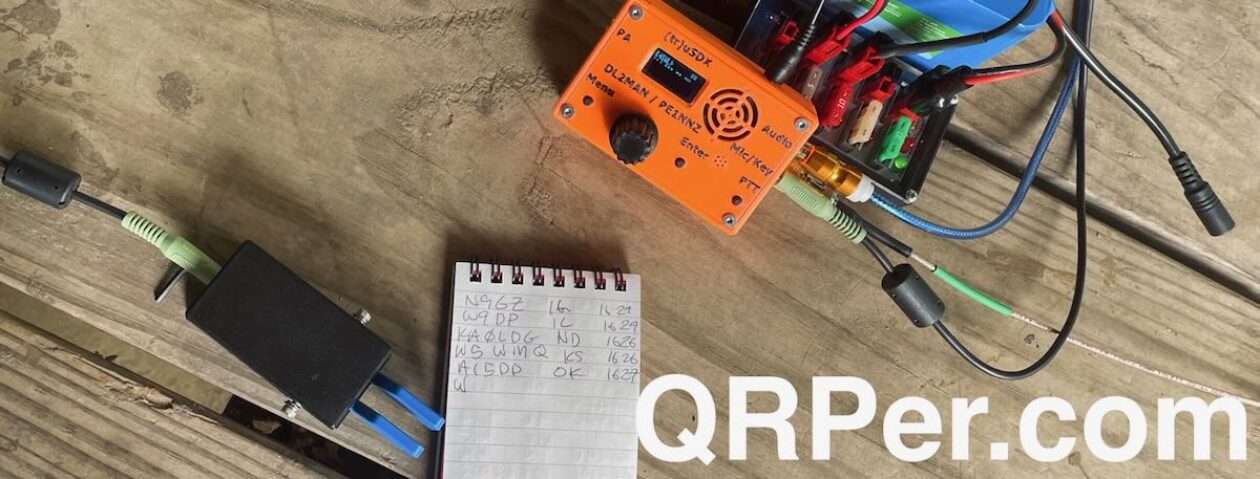Many thanks to Conrad (N2YCH) who shares the first of a three-part field report series outlining his 2023 Hamvention rove with Peter (K1PCN). Click here for Part 1, and look for Part 3 next week!
Part 2: Dayton Hamvention Trip QRP POTA Rove
By Conrad Trautmann, N2YCH
Pennsylvania
Welcome to part two of three of the Hamvention QRP POTA Rove. If you missed part one, you can find that installment here.
Early on Thursday morning, May 18, 2023, Peter, K1PCN and I headed from Morgantown, West Virginia north to Pennsylvania to activate K-8920, the PA 223, Pennsylvania State Game Lands. While the park covered a large geographical area, we were able to find a parking lot not far off the highway that made it easy for us to get to and activate.
Peter spotted a nearby gazebo which was also a viewing area and hiked over to it to activate. If you look closely in the photo below, you can see it in the distance behind the sign and my antenna. I stayed with the Jeep and set up on the tailgate using the Buddipole vertical.
Since it was early in the day, we used our frequency strategy of Peter on 40 meters and me on 20 meters. My QSO map here shows some decent DX for QRP on 20 meters at 8am ET.
Ohio
We traveled North towards Pittsburgh on Interstate 79 and then West on Interstate 70, passing through West Virginia again and then stopped at K-1934, Barkcamp State Park in Ohio.
I tuned my antenna for 17 meters and Peter activated on 20 meters.
I managed to activate the park, but it was slow going for me on 17, so when Peter finished up on 20, I changed to 20 meters and got a few more on that band just for good measure. Thinking that the slow QSO’s could have been the radio, I did switch to the IC-705 here, but that did not make any difference. It could have been conditions or our location. I did have better luck on 20 meters than 17. And I don’t know about you, but I can never go for just ten QSO’s. I feel like I need a few extra ones just in case. Here is a photo of me set up at a picnic table next to my antenna. Continue reading Part 2: N2YCH and K1PCN’s Dayton Hamvention Trip QRP POTA Rove












































